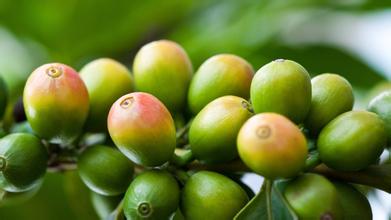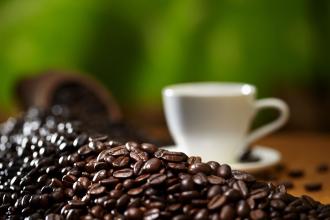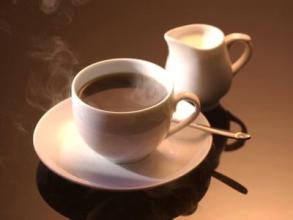Introduction to the correct use of French filter press apparatus for preheating
Introduction to the correct use of French filter press apparatus for preheating
French filter pressure pot selection tips: the filter pressure pot filtration is good or bad depends on the quality of the filter element, the selection of a spring is extremely important for the filtration of coffee powder, will directly respond to the taste of coffee.
The French kettle is usually called the tea maker, so is the French kettle really only used for making tea? The answer is no at all! In fact, if you want to choose the most practical coffee entry equipment, French pressure will not be at the top of the pack, but it must be among the top three. Its ease of control over time and the convenience of observation are unmatched by other brewing instruments.
The time is the easiest way to control the playing kettle, but the same condition of beans, grinding, and different water temperature have different effects. Generally speaking, the longer the time, the stronger the taste, but it is prone to bitterness, astringency and miscellaneous taste. However, when the five major factors of coffee change, the control time will have unexpected results: for example, deep-roasted beans will get great aroma and sweetness if the time is shorter, while light-roasted beans need a little more time to extract acid and aroma.
Observe the condition of beans, because French pressure is the easiest equipment to concentrate on the condition of beans. You can look at the amount of crema of coffee after contact with water, and the coffee suspended on the surface of the water slowly sinking, observing these phenomena can not only learn more about beans, but also have a better understanding of other equipment.
If you don't like the leaking fine powder from the kettle, you can filter it with filter paper after the coffee is brewed. There are many ways to filter, depending on your creativity and the equipment around you! )
1. Proper ratio of powder to water-conventional control between 1:12 and 1:17, too little powder is too light, but too much powder is wasted.
two。 Suitable grinding-one size larger than the scale by hand, and the particles feel larger when you touch them with your hands.
3. Perfect extraction time-3.5 to 4 minutes. If the powder is fine, soak more, and if the powder is coarse, soak less. The classmate said, "should I just scald it with water?" Well, it's true in theory, but I guess your cup of coffee is about the same as black sesame paste (the metal strainer of the kettle doesn't filter too fine powder).
4. The temperature of the brewed water depends on the degree of baking of the beans-deep-baked, like fried chestnuts, and the water temperature jumps as low as 85. Baked as lovely as a big girl, the water temperature will be more comfortable, around 92. If it's too light, just watch and come on, it's a hundred at the worst.
5. There should be a decent pot-a pot thick enough (heat preservation) and a strong metal filter (filter clean). Recommended brand: bodun.

Important Notice :
前街咖啡 FrontStreet Coffee has moved to new addredd:
FrontStreet Coffee Address: 315,Donghua East Road,GuangZhou
Tel:020 38364473
- Prev

Introduction to the operation manual for video descaling of Yuri F50 coffee machine
The operation manual of Yuri F50 coffee machine descaling video describes the cleaning of coffee residue from the brewing head, which can separate the filter net and the copper block on the brewing head. The filter net is the part that comes into direct contact with the coffee powder every time you brew the coffee. Because the coffee powder is pressed, the coffee liquid will flow out of the powder bowl only when it is pressed to a certain extent, so before the coffee seeps out.
- Next

Introduction to the instruction manual for the use of Delong coffee grinder
How to use Delong Coffee Grinder the tutorial instruction manual introduces two possibilities: 1. The bean grinder has been around for a long time, and the knife head is stuck by the coffee powder, so the coffee beans can't go down. 2. The red light indicates that the coffee machine needs descaling. It is recommended that you clean it up in time and do a comprehensive descaling cleaning. The cost is about 300-500 yuan. If it is not maintained in time, basically this machine will be used in the future.
Related
- What is the Philharmonic pressure? How to use Philharmonic pressure to make delicious coffee
- Why does a hand grinder have more fine powder than an electric grinder?
- In addition to the hot mom, what is the difference between the versions of EK43 | ditting and Mahdi ek43?
- What kind of equipment do you need to make coffee by hand? Introduction to novice starter cooking equipment tools
- Espresso needs to be ground how thick and thin scale entry Italian Coffee Machine Bean Grinder investigation and Grinding course
- How much does it cost to open a small private cafe? How much does it cost to learn coffee? How to operate it?
- The difference between the flavor characteristics of hand-brewed coffee and coffee maker is hand-brewed coffee really better than coffee maker? Can I use a coffee machine to make coffee beans by hand?
- The difference between 01 and 02 of hario v60 filter cup what is the difference between 01 and 02 filter cup opening and cooking flavor
- What's the difference between the smart cup and the French kettle? Which is better, the French kettle or the Smart Cup?
- What's the difference between a smart cup and a V60 filter cup? The difference between the taste of smart cup and hand-brewed coffee

